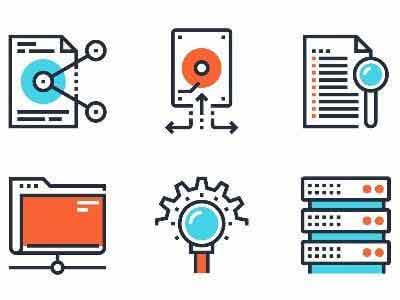A Progressive Approach to Data Loss Prevention
It’s not only large Australian enterprises that should worry about data loss prevention. Even SMBs become a target of hackers worldwide. Additionally, data theft is a bigger problem now more than ever, so data loss prevention should be a major concern of everyone. If you own or run a business in Brisbane or other parts of Queensland, make sure you have a data loss prevention plan. Here are the steps to ensure that your business information is secure and you have a backup.
1. Categorise: What Are the Data You Can’t Lose?
Your data can be classified based on the storage, source application and users who create or access them. Categorising your data makes them easy to prioritise and track. It also helps you determine which data are mobile and at risk.
2. Analyse: Which of Your Data Are at Risk?
Operations vary, and this is one of the reasons that there is no single formula to determine which data are at risk more than others. The level of risk varies from one business to another. For example, in one enterprise, the data shared with business partners and customers are at risk while there are organisations that will find the risk is due to internal security and encryption systems. To have an effective data loss prevention strategy, you need to analyse your current IT system carefully. Schedule an IT system audit and have experienced IT professionals look into your system.
3. Prioritise: Which Data Are the Most Important?
Not all of your data have an equal level of importance, so you need to determine which is more important than others. Most businesses would want to protect or retrieve their intellectual property and real time data, which is why it’s usually the top priority in data loss prevention programs. Real time data Organisations in the healthcare industry mainly put their patient records on top priority, while companies in the financial industry normally prioritise their data related to payment card industry (PCI) compliance. This step will be easier if you complete the first step: categorise your data.
4. Monitor: Look at the Data Movement
It’s also important to determine and understand how data are used. This information will help you identify not only the data of critical importance but also the data that are at risk of data loss. While data movement doesn’t always mean data loss, how data are used and transferred or shared may increase the risk of data loss, which is something you must consider when creating a data loss prevention plan.
5. Control: Reduce the Risk
Once you already know how data are put at risk, you can now set up controls to reduce the risk. This is a basic way to prevent data loss, but it is the foundation of better methods to prevent bigger risks. You should install a firewall and antivirus software to deter cyber attacks done by spamming and phishing.
As a second line of defence, we highly recommend that you not only backup your files regularly but also test your backups every now and then to make sure that they can be restored if needed. It’s also important to have a backup copy offsite to protect your files from fire and natural disasters. Cloud backup is an option, but keep in mind that you need an Internet connection, which might not be available after a fire or flood, to retrieve your cloud backup. Contact us to learn more about information security solutions for any business size.
Watch: What You Need to Know About Backup
6. Inform: Tell Your Employees
Complement your infrastructure-centred approach to cybersecurity with a human-centred approach. No matter how much you spend on information security systems, the users or your employees might put your data at risk inadvertently so it’s great to conduct information security training to keep them informed. They must know how they can help prevent accidental data loss. Through data security orientations, you can educate your employees on how certain actions can put confidential information or critical files at risk. Some organisations opt to set up a prompt whenever employees are trying to do something that may violate the company’s policy on data use.
7. Don’t Stop: It’s an Ongoing Process
Data loss prevention is an ongoing process. You’ll find that it’s easy to implement and it can be done with minimal disruption to your business operations, and if you can do that properly, you can proceed to expand your efforts.
Pay attention to your systems and update them as soon as you can. Hackers use vulnerabilities to access and exploit computers and networks but companies like Microsoft release security patches to protect users. Be sure to apply updates as soon as they become available.
Learn How to Avoid Business Data Loss
The Final Word
Organisations can take a progressive approach to data loss prevention. Take the fundamental steps to protect your data. Understand your data. Categorise, analyse and prioritise them so that you know which data are the most important and which ones are at risk the most. Set up controls, backup your files online and offsite and allot time to test your backup files. Involve everyone in your organisation’s information security efforts and don’t stop there. Update your systems and expand your data loss prevention program.
[module-379]




























